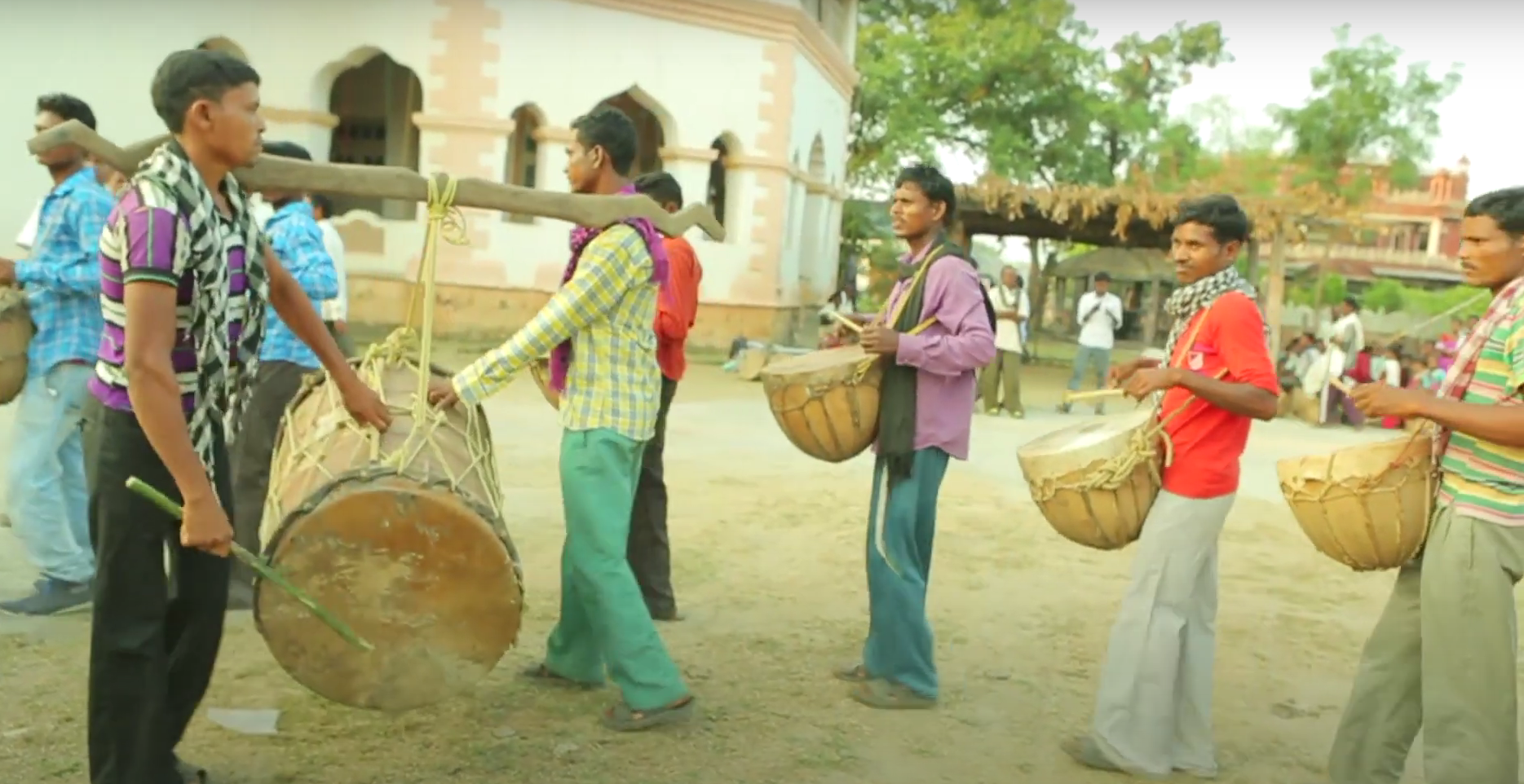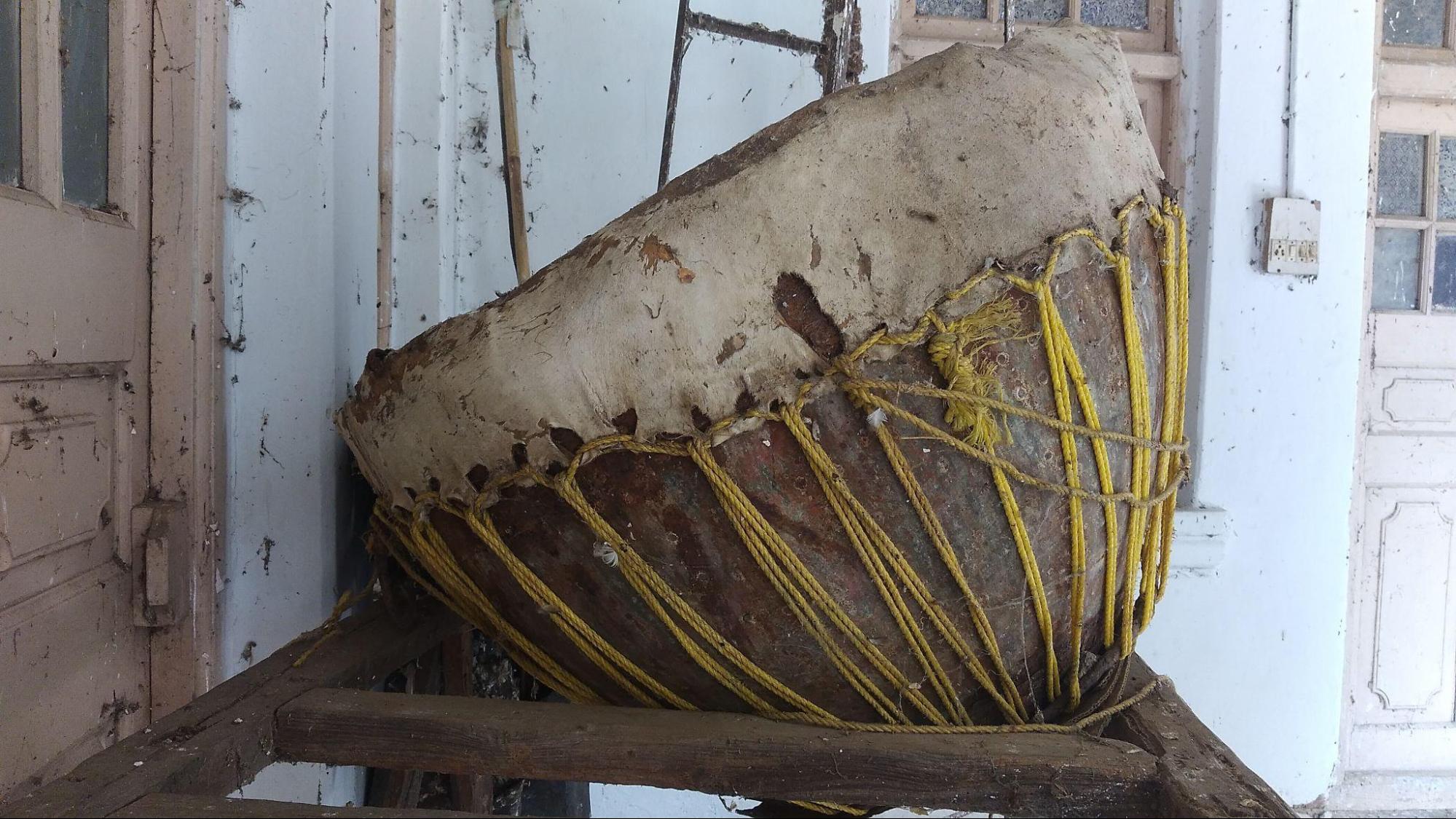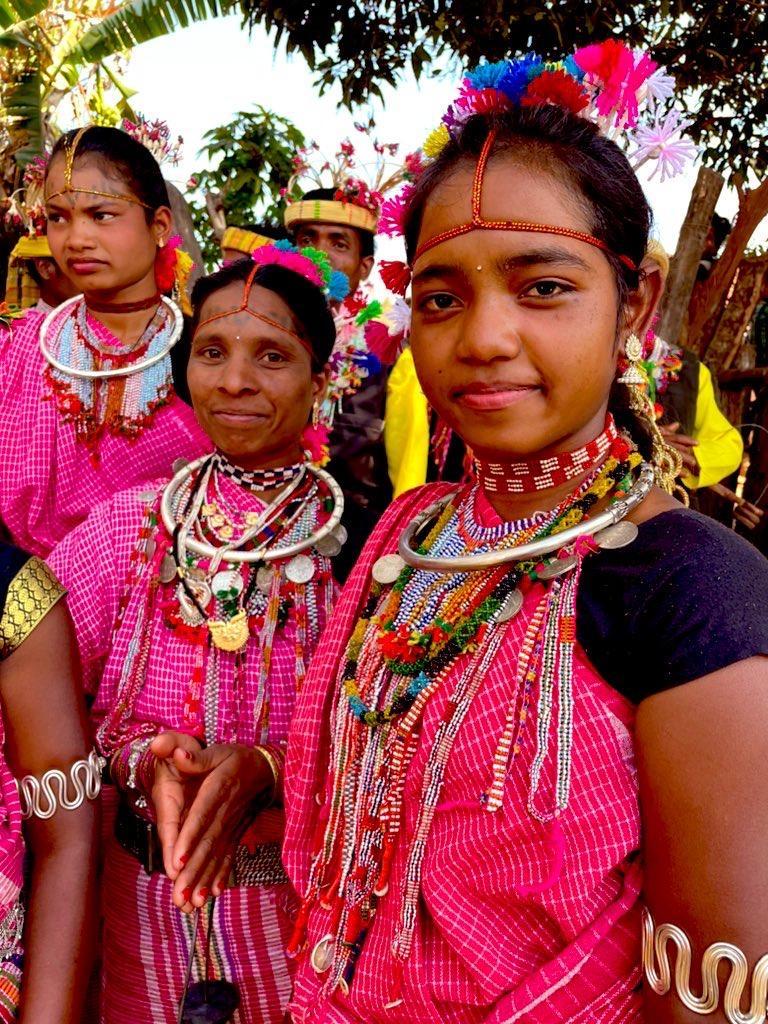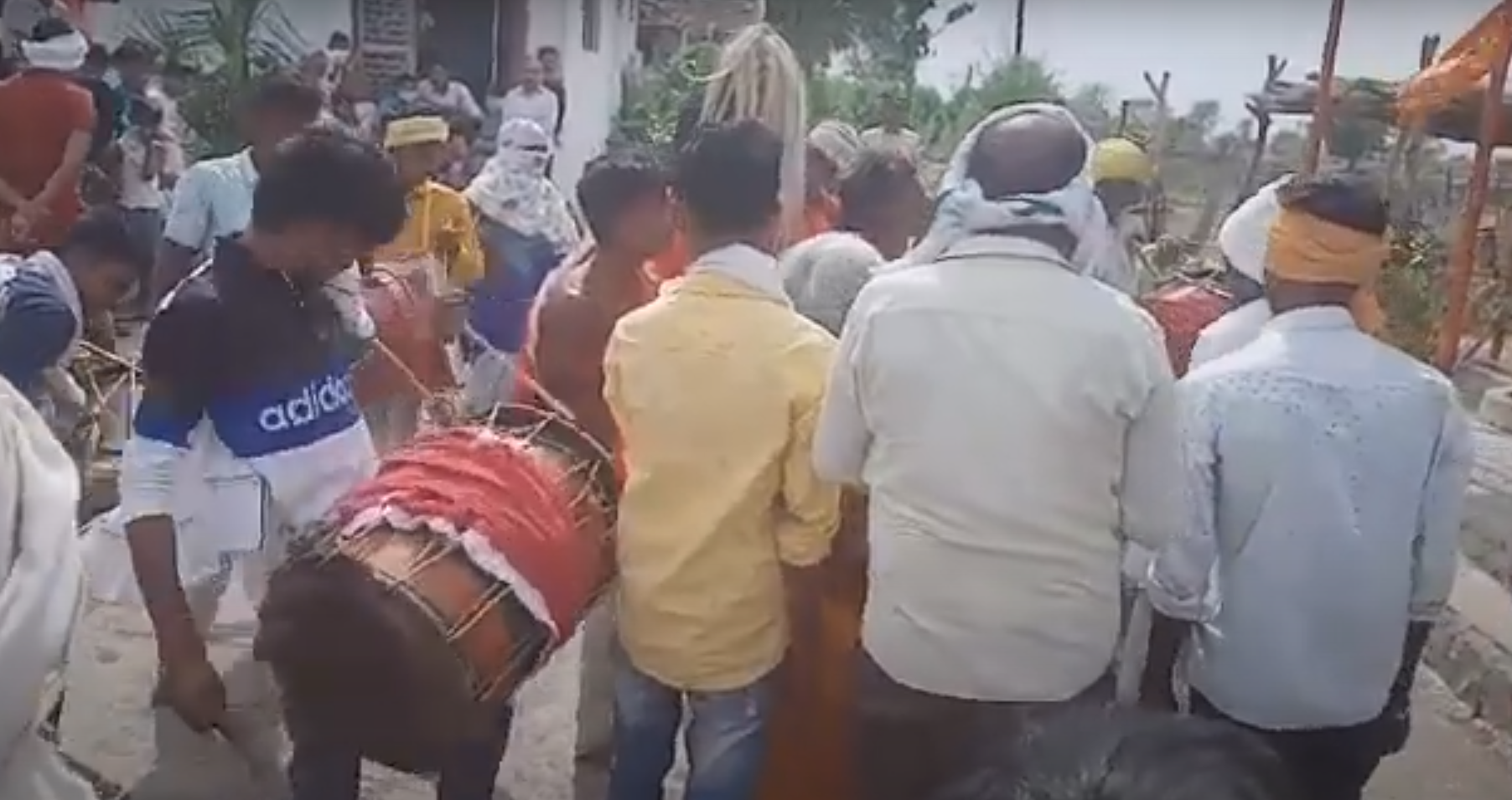GADCHIROLI
Festivals & Fairs
Last updated on 4 November 2025. Help us improve the information on this page by clicking on suggest edits or writing to us.
Dussehra
Dussehra is a traditional festival, but the Madia community does not celebrate it within their own villages. Instead, they travel in groups to Aheri, the former zamindari of the region, where Madia men and women come together to perform Rela dances, sing, and visit the palace of their traditional ruler, the Zamindar of Aheri, Raje Visveshwarrao Maharaj (now succeeded by his son, former MLA Raje Shri Satyawanrao Maharaj). During the festival, they receive gifts, and the Maharaja is carried in a palkhi during a musical procession.
A Dussehra ceremony takes place near a tree at Gadaheri on the Aheri-Devalamari road. Madias from nearby villages spend the night performing Rela in the palace courtyard. Approximately a month later, Dussehra pujas are conducted in different sections of the Madia community, with major villages in each section hosting the ceremonies. The dates for these events are set by the village chiefs of each section based on their convenience.


Holi

During Holi, the Madia community completes all agricultural work, and with an abundance of toddy and gorga, celebrations are lively. On Holi, people visit every household to collect "bhojara" (donations) and consume considerable amounts of alcohol. With ample wood available, a large bonfire is lit in the village square, where offerings of haldi and picha are made to the fire.
One community member shared, "On Holi, Mauli is offered an egg, and we share the prasad in her honor," marking the puja of Agni Devta. The festivities continue until dawn, followed by the slaughtering of goats. The celebration involves applying colors made from flowers and sharing a communal meal.
Bail Pola
On the day of Pola, a festival dedicated to bulls, the Madia people perform puja for the Devta Kodalpen. Unlike others who decorate their bullocks, the Madia do not engage in such practices. Instead, they offer salt to the oxen and conduct rituals by feeding sacrificial bulls. This puja is done to appease Kodalpen and ensure the safety of the bulls in the gaushala.

Gota Paatana

In Tadguda, part of Surjagad Patti in Taluka Etapalli, the Naroti clan celebrates Gota Paatana in the first week of May. The sacred site of the Naroti clan, known as Raud, is dedicated to the devtas Nulemutte and Kalavakke. While some may refer to this Raud as a mandir due to Hindu influences, it is distinct from a traditional mandir, reflecting the unique Indigenous culture and puja practices.
During Gota Paatana, members of the Naroti clan gather at their respective Raud sites each year to conduct rituals. This ceremony is a time for puja and to seek aashirwad for good harvests and clan prosperity. It reinforces their bond with the devtas and ensures protection from negative forces. The event also serves as a social gathering where clan members reconnect and discuss various matters.
For devtas without an anga (a ritual structure made from tree trunks), the Gota Paatana ritual is performed. In contrast, for devtas with an anga, a different ritual called Pichyeg is conducted. Anga structures are prevalent in Abhujmad, Chhattisgarh, and neighboring districts in Maharashtra, representing a significant aspect of Indigenous puja and history.
Around 50 Naroti clan members from Tadguda participate in Gota Paatana, with representatives from each village taking part. However, during significant events like Pen Karsal (a festival of devtas), larger gatherings occur, including people from other clans. Pen Karsal involves festivities and decisions related to the clan, such as assigning responsibilities, planning future activities, and discussing any issues or financial aspects. Both Gota Paatana and Pen Karsal are pivotal events for the clan, attracting serious attention and participation from all members.
Buddha Purnima
In Gadchiroli, Buddha Purnima is celebrated mainly by the Gond and Buddhist communities. The festival, marking the birth, enlightenment, and death of Gautam Buddha, features public programs at venues like Indira Gandhi Chowk, organized by the Buddhist Society of India and local Buddha Viharas. Cultural performances, Dhamma talks, chanting, and the offering of kheer draw people from across the district.
A distinct village tradition marks the day with a grand procession taken out after worshiping the clan deity. At the village entrance, water-filled pots are placed before the Maruti temple, and the Mhorkya - the ritual leader - walks over them, believed to bring divine blessings (darshan). Despite the heat, many join the vibrant procession, which concludes the next day with a communal meal featuring traditional dishes, symbolizing gratitude and togetherness.

Amba Mahotsav
The Amba Mahotsav is organized by the Agricultural Science Center of Sonapur, led by Sandeep Karhade, the Programme Coordinator. Celebrated annually with local mango varieties, the festival attracts visitors from various regions. It features a diverse range of mangoes including Suvarna Rekha, Amrapali, Safeda, Manjiri Dasheri, Payri, Keshar, Hapus, Lalbagh, Ratna, Mulgowa, Mallika, Langada, Sirkurus, and Totapuri.
The festival has been held for the past six years, starting in 2018. In 2023, notable mango varieties like "Collector" and "CEO" gained particular popularity among attendees.
The Sonapur Agricultural Science Center, Gadchiroli, plays a crucial role in this event by offering guidance and support to farmer producer companies and women self-help groups, aiming to enhance production and promote agricultural development.
Markanda Jatra
The Markanda Jatra is celebrated at the ancient Markanda Mandir complex on the banks of the Wainganga River in Chamorshi taluka. Spread over 40 acres, the Mandir is believed to have been built by the Rashtrakuta dynasty between the 8th and 12th centuries. The Mandir is dedicated to Bhagwan Shiv.
Devotees gather to bathe in the sacred Uttaravahini and worship Bhagwan Markandeshwar, believing it cleanses them of sins and misfortunes. This enduring faith, especially among women, draws people from Gadchiroli and beyond, making the Markanda Jatra a significant spiritual event in the region.
Pushkar Kumbh Mela
The Pushkar Mela, held every 12 years on the Pranhita River at Sironcha in Gadchiroli district, attracts thousands of people daily from Telangana, Andhra Pradesh, Karnataka, Tamil Nadu, Chhattisgarh, and Maharashtra. People take a dip in the Pranhita River at Sironcha and offer haldi, kumkum, sarees, and bangles to Devi Pranhita while performing puja. After the snan, pindas are offered to ancestors by Vedapandits.
People also visit Shri Vitthal and Rukmai on the riverbank. Afterward, they proceed to Kaleshwaram, known as Dakshina Kashi, to seek the aashirwad of Kaleshwar-Mukteshwar.
Last updated on 4 November 2025. Help us improve the information on this page by clicking on suggest edits or writing to us.